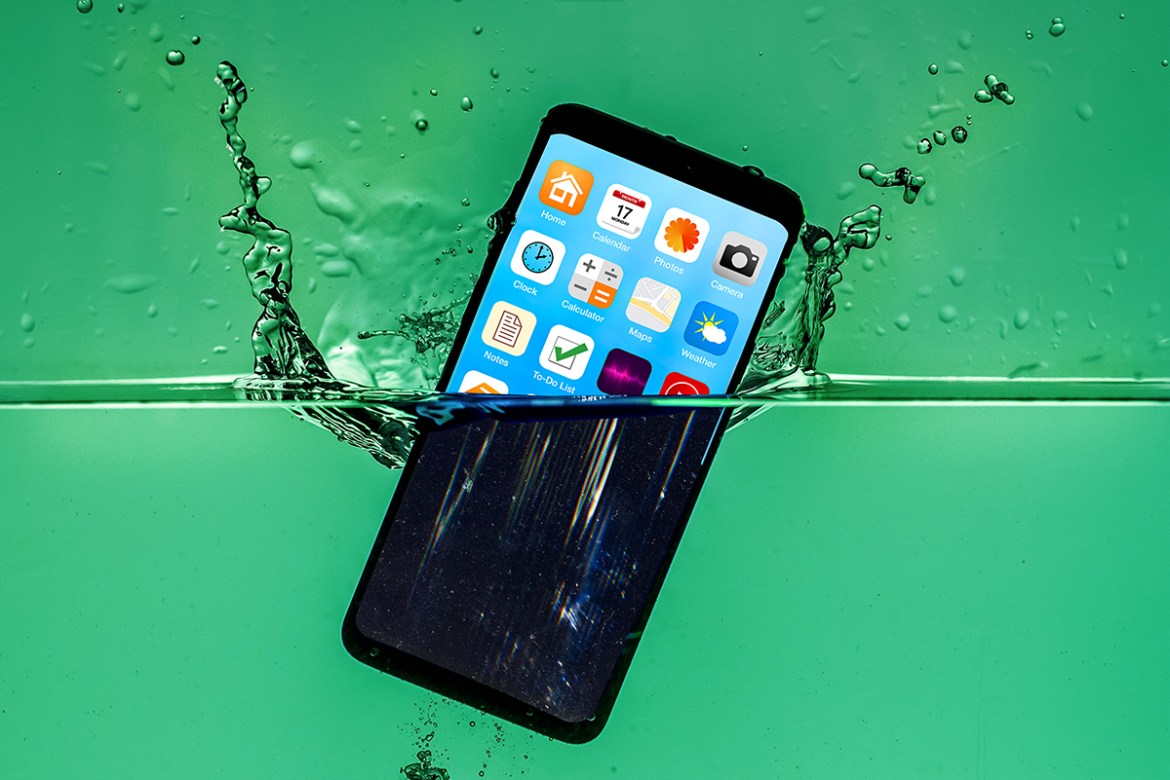It’s the fear of a lot of smartphone owners. Whether you’re out vacationing in some pristine island getaway or caught in the middle of torrential rain, when your smartphone drops in the water, panic ensues.
Electronic parts and water do not mix, but smartphone technology has come a long way. Phones are sturdier now, with more precaution on environmental elements like dust, wind, and rain.
We’re here to tell you not to worry as much, but to also act quickly if you want to save your trusty electronic device.
Here are quick and handy steps to follow:
Turn the smartphone OFF
Once you fish the phone out of the water, immediately turn the phone off.
Most often that not, your phone would probably turn itself off but if it doesn’t, turning the power off manually will ensure that your phone won’t further short its internal circuits.
Again, electricity + water = bad.
Remove the case, SIM Card and Memory Card as soon as possible
The idea is to help your device dry as quickly as possible and that means making sure internal removable components like SIM Card and Memory Cards are kept dry as well.
Of course, don’t forget to pat-dry everything first with a dry towel or microfiber cloth (to prevent scratches to your device).
Don’t use tissue as the paper fibers may detach and clog your device further.
Put the device inside a vacuum bag OR a sock works well, too
Place your phone inside a vacuum bag. If you don’t have one of those, placing the device and all its component inside a clean sock works well, too.
This will add a layer to absorb liquid once it comes out of the device. It will also help shield your smartphone against other elements.
Another option, use a vacuum to quickly draw excess water off
If you have a vacuum cleaner with a hose, you can cup the hose nozzle with your hand before putting it around your smart device.
Make sure to hit all the openings of your smartphone so you can get as much excess water out as possible.
Remember, the longer your phone gets submerged in water, the more water it will retain. So, it’s important to remove ALL of those out.
Go around the openings of your smart device for about 15 seconds each and do this for about 3-5 minutes in total.
That should remove a good chunk of liquid. BUT you’re not done yet.
I should put it on uncooked rice now, right?
We’ve all seen the memes and we’ve heard anecdotal evidence that this works.
While, yes it could, putting your smart device on rice may actually cause more harm that good.
There are a lot of particles in uncooked rice that we’re not aware off and these may get into the device, mix with water and start unnecessary buildups.
Even if you put the device inside a vacuum bag or a sock, drying your device on rice will take a long time – longer than if you actually don’t do anything.
In our research, we saw that drying the device on uncooked rice usually takes a week or more to be able to do the job right.
Skip the rice for now.
Wait, if not rice then what do I use to dry my device?
The answer is air.
You have 2 options: you can put the device in front of a fan for about a day or two and just let nature takes it course OR you can hook your socked smartphone device into a vacuum cleaner or a blower and watch your device dry up in a matter of hours.
For those using a blower, make sure that the temperature is set to low or use cold blow just to be sure.
Warm air is actually preferred but we don’t want to make the temperature too high that it cooks your internals.
The average smartphone can withstand temperatures beyond 40 degrees Celsius anything beyond 50 and you may risk permanent damage to your phone.
If I don’t have a vacuum, am I doomed?
Not necessarily, but you will need to be extra patient.
There’s always the urge to try and turn the device on when you feel you’ve patted the phone dry. DON’T.
Without a vacuum, removing excess water from the device will take an inordinate amount of time.
If you don’t have a fan, you can put the device in an area where it can dry off that’s not directly underneath sunlight.
Put a paper absorbent underneath it and remove the device from the sock or vacuum bag and in about 8 to 10 days, your phone should theoretically be dry.
Having a fan reduces that time by more than half and having a vacuum reduces that to mere hours.
So, if you do not have the luxury of these devices, we suggest waiting.
The last thing you want to do is to accidentally short the entire circuit board of your phone by turning it on while it still has some liquid on it.
Turn the phone on and check for any damage
Once you have dried everything off, you can turn your smartphone on and check for any damage.
Once you get access to your smartphone brand’s service center, we highly suggest you let them check it.
If smartphone is still within the warranty period then routine checkups and diagnostics should be part of the package.
If your smartphone happens to have an IP68 rating then the success rate of ensuring that your smartphone survives being dunked on water increases drastically.
You may also avail cases that have waterproofing features.
More and more, with technology advancing, we’re hoping that the fear of phones being submerged in water will become a thing of the past.
For now, we’re hoping this guide helps you revive your wet smartphone.
When dealing with unexpected situations, don’t panic. Stay calm and asses the situation carefully. It’s always good to be prepared for natural disasters and calamities, visit Stay Smart for helpful tips to keep in mind.



